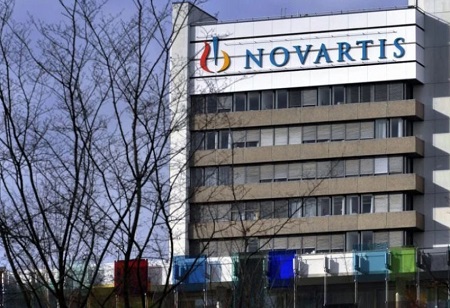India Pharma Outlook Team | Thursday, 13 April 2023

Rare diseases are described as potentially fatal or persistently debilitating conditions that affect a limited number of people. Novartis committed around $10 billion on total research and development (R&D) in 2022 and has already received 23 approvals for new medicines and new indications for existing drugs in the United States, European Union, China, and Japan. "Novartis has been actively investing in research and development for rare diseases, with a focus on novel therapies that can address unmet medical needs in this area." We also have 44 current Phase III programmes for rare diseases and other portfolio disorders in our research pipeline.
"In India, 17 clinical programmes in rare diseases such as spinal muscular atrophy (SMA), immune thrombocytopenic purpura (ITP), atypical hemolytic uremic syndrome (aHUS), and Lupus Nephritis are currently running," Amitabh Dube, Country President and Managing Director, Novartis India, informed sources. SMA is an inherited genetic condition that affects nerves and muscles, causing the muscles to grow more weak, whereas ITP is an autoimmune sickness in which the immune system destroys blood clotting platelets, causing the patient's blood to not clot properly.
Tiny blood clots occur in small blood arteries in aHUS, whereas Lupus Nephritis is an autoimmune illness in which the body's own immune system targets healthy cells. "While each rare disease is rare in and of itself, the large number of 6000-8000 rare diseases means that up to 6% of the world's population may be affected by a rare disease at some point in their lives." Novartis recognises the huge unmet demand and is committed to bringing breakthrough treatments to people suffering from uncommon diseases," said Dube.
“We are consistently expanding our efforts to find potential treatments for rare diseases that includes investing in cutting-edge technologies such as gene therapy, cell therapy, and RNA-targeted therapies that can address the underlying causes of rare diseases. We have also been collaborating with academic institutions, biotech companies, and other partners to identify and develop new therapies for rare diseases,” said Dube, adding that additionally, we are also leveraging our expertise in precision medicine and biomarker discovery to identify patient subgroups who may benefit from specific treatments.
According to Dube, the discovery and development of a new medicine typically takes 10 to 15 years from early study to drug launch. This encompasses the six to eight years between Phase I clinical studies and market introduction. Due to a variety of reasons, the timescale for rare diseases is even longer. "The past decade has seen tremendous progress in the development of new drugs for patients with rare disorders, including Atypical Hemolytic Uremic Syndrome, Immune thrombocytopenic purpura, and spinal muscular atrophy (SMA)," he continued. “Novartis continues to work towards improving the understanding of many rare diseases.
By doing so, we not only assist patients who usually have limited treatment options but also enhance our understanding of the molecular pathways that govern various diseases,” said Dube. “This could eventually result in the development of novel treatments for a broader range of rare diseases. From an overarching perspective, the way forward for rare diseases will involve a multi-faceted approach that addresses the gaps in the current system and builds upon current successes,” he said. While science drives Novartis' research, Dube advocates for a favourable policy environment that promotes development and access to orphan medications.
An agile regulatory system that takes into account the problems of limited patient populations, such as the difficulty in recruiting enough patients for clinical trials, can result in faster drug approval. “Specific orphan committees and regulatory fast track models have proven to be effective tools for bringing orphan medicines to approval. Market incentives, such as orphan exclusivity, help compensate for the small number of patients with a given rare disease. Receiving adequate reimbursement in line with the value a new medicine provides to patients, the healthcare system and society ensures healthcare innovation is sustainable in the long-term,” he Dube adding that collaborating across sectors and stakeholders, including patient advocacy groups, research networks, and public-private partnerships, can lead to more effective solutions for rare diseases.